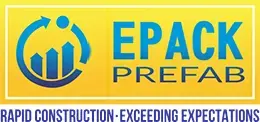The ever-increasing cost of construction and the decreasing availability of time have compelled the world to look for less expensive and getting-quickly-constructed kind of options. This pursuit has landed us amongst fabricated structures and portable buildings and now these two concepts have been raging all over the construction industry. Seeing the rapidly rising demand, a number of manufacturers came into existence who were dealing in manufacturing of pre-fabricated structures, portable buildings as well as cold rooms and clean rooms. However, in this post, we will specifically discuss the concept of portable buildings and their advantages.
Portable buildings are basically temporary constructions manufactured at a remote site and transported to the main site. There they require a bit of installation service and this is basically what portable buildings are. Their biggest USP is that upon relocation, you don’t have to spend upon the construction. What you can do is relocate with your entire home. Yes, you can transport the entire setup (building) and get it installed at some other city. The concept is still relatively new in India, but across Europe, these homes have different names like portakabin in the UK and porta-kamp in the U.S.A.
However, a very big section of people who are not using them believe that they are not very useful, but only those who are using them, know how multi-purposeful they are. The concept is not new in the west and they were first used around 60 years back in the U.S. In the initial years, they were very rudimentary in the design and had very plain looks, but with the coming years, the manufacturers continued to innovate and increase their attributes. Modern day buildings are made using various materials and to many styles, meaning that they can be much easier on the eye and on the wallet.
An interesting fact about them is that when they came into existence, they were named as demountable building and they were simply a temporary construction to be used for temporary accommodation (3-4 week). But with the changing times, recession arrived, prices grew incessantly and this forced people to adopt them for longer periods.
This idea gave them wings to fly and they researched a lot to bring these portable buildings in a more durable, robust, weather-resistant and beautiful form. All these factors combined to bring permanence to these structures. The education sector across the globe emerged as the biggest buyer of these structures as they often had the requirement of a building for school structures in remote areas. The structure they wanted was expected to have several qualities and this concept completed nearly all the conditions put by the education sector.
Construction industry also emerged as one of their biggest consumers. They used them for accommodating workers and laborers on bigger projects with the duration of one-month or more. They can be stacked on top of each other, saving space, and also joined together to form larger rooms.











